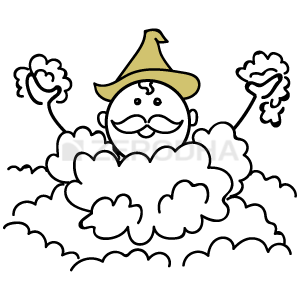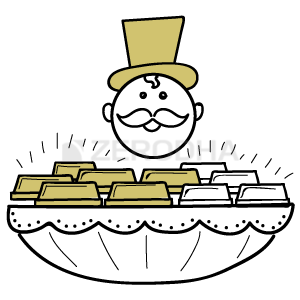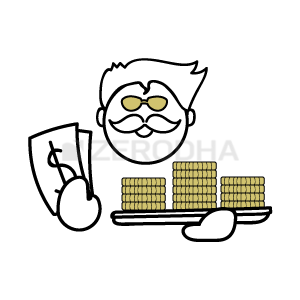1.1 – Module Orientation
At the onset, let me give you a quick orientation so that you can set your expectations for this module. The focus of this module will be on three main topics –
- Currencies and currency trading
- Understanding Commodities
- Interest Rate Futures
I agree that each of these topics is vast, and commands an entire module on its own. However, these assets are not as liquid as equities. We are still at a very nascent stage when it comes to trading these alternate assets in India. Given this, the idea here would introduce these assets, familiarize you with what drives these assets, and what you need to watch out for before placing your trades. So, in a sense, you could consider this module as a ‘thought-starter’ of sorts for trading these alternative assets. Needless to say, we will try and discuss these topics to a reasonable depth, ensuring you have more than just the bare basics on these topics.
We’ll begin the module by discussing Currencies. We’ll discuss some of the popular currency pairs traded in India such as USD-INR, GBP-INR, and INR-JPY. We also discuss other (non INR) currency pairs such as EUR-USD, GBP-USD, and USD-JPY. The discussion on currencies would be spread across a few chapters. The objective here would be to introduce these currency pairs and familiarize with not just the contract specification but also with a few fundamental factors that affect these currencies.
Once this is done, we’ll move on to the next part of the module. This deal with Commodities. We’ll follow a similar template here – i.e. introduce the commodities (both agri and non-Agri) and get familiarize you with not just the contract specifications but also a few fundamental factors which would influence the movement of these commodities. Some of the commodities we’ll be discussing would be – Gold, Silver, Zinc, Aluminum, Crude oil, Natural Gas, Turmeric, Cardamom, Pepper, Cotton, etc. Of course, the formula to calculate the price of commodities such as Gold, based on the price of Gold in International markets will also be discussed.
Lastly, this module will discuss ‘Interest Rate Futures (IFR)’, which I think is an inspiring space. The discussion would deal with topics related to RBI’s borrowing pattern, issuance of sovereign bonds, listing on NSE, and eventually trading them. Based on how we progress, we can even touch topics related to bond trading and bond trading strategies.
As you see, we have some fascinating stuff lined up. I believe this will be a great learning experience for you, and me!
Please note, the prerequisites for this course –
The above-mentioned topics are essential before learning about currencies. I’d suggest you brush up these topics before proceeding.
Let’s now begin this module by discussing a few basics about currencies.
1.2 – Currency (in)equality
Before we get started on currencies, let me share with you an interesting conversation I had with my 6-year-old daughter. Perhaps this could set a good starting point for our discussion on currencies. 🙂
I had recently been to Austria with my family on vacation. As you can imagine, the country is wonderful. It was my daughter’s first visit to Europe, and she was in complete awe. Needless to say, she was attracted to all the small little stores selling pretty little things. On one of the days while we were there, she forcibly took me to this toy store she spotted off the street, and I knew I was in for trouble. After spending about 5-10 minutes scanning through the shop, she finally picked up a colourful wooden caterpillar, and she wanted me to buy her that. It looked really nice, and I was willing to buy her that until I saw the price! The wooden caterpillar had a 25 Euro price tag. I thought I’d negotiate with her and buy her something else.
I tried telling her that it was 25 Euros, and 25 Euros was quite steep, especially for a tiny wooden caterpillar! She obviously didn’t understand my point and refused to budge from her stance. In fact, she said ‘it’s just 25 Euros’, and I realised that she equated 25 Euros to 25 Rupees, completely oblivious to the fact that she needs to multiply each Euro with 78 to get the exact Rupee equivalent.
However, this got me thinking – why isn’t one Euro or for that matter, one Dollar equal to one Rupee? More generally, why isn’t one unit of currency belonging to country A equivalent to another unit of currency belonging to country B? I understand this may sound very basic, and some of you may already know the answer. Still, I think it is essential to discuss this and understand why the inequality between currencies exists. After all, it is this inequality which allows us to trade the currency pairs.
To understand this, we need to brush up a bit on the history of currencies and how currency trading evolved. Don’t worry; I won’t get into history lessons here; will restrict this to a quick recap :). For the sake of simplicity, let me break this down into different stages for you based on my own understanding of the evolution of currency.

Stage 1 – The Barter era
Before the advent of currencies, transactions occurred through something called the ‘barter system’. A barter system is a ‘method of exchange’ which has existed for many centuries. In a typical barter, people exchange goods for other goods (or services). A classic example would be – say a farmer has harvested cotton, he could exchange (or barter) cotton with another farmer giving him wheat. Similarly, a farmer who has oranges could exchange the oranges he has harvested with someone who agrees to wash his cows and sheep.
The problem with the barter system was the scale and divisibility of the system. For example assume a farmer had 5 bales of cotton and he wants to barter cotton with someone selling cattle, assuming 2 bales for 1 cow, after the barter he’d be left with 2 cows and a bale of cotton. He would certainly not get half a cow for 1 bale of cotton. This caused a divisibility issue within the system.
The scalability was also an issue with the barter system – it required our farmer to travel from one part of the country (with all his produce) to another part of the country to barter for goods of his choice.
Both these issues were eventually overcome with an improved system – Goods for metal.

Stage 2 – Goods for the Metal era
The problems that plagued the barter system eventually paved the way to the next transaction methodology. People tried to invent a common denominator for the ‘exchange’. The common denominator ranged from food grains to metals. But eventually, metals thrived for obvious reasons. The metal was divisible, easily movable, and metal had no issue with shelf life. Further, of all the metals, Gold and Silver were the most popular; therefore, eventually, these metals became the standard for transactions. The direct exchange between gold/silver and goods lasted for many centuries; however, things started to change when people deposited gold and silver coins in safe havens and issued a ‘paper’ against the value of gold. This paper derived its value based on the gold/silver coins deposited in haven.
With time, safe havens evolved to banks and the paper transformed to different currencies. Perhaps this was the start of the book-entry of the currency system.

Stage 3 – The Gold Standard era
Over time, as domestic trade flourished, trading across borders also flourished. Economic sense prevailed, and merchants realized producing everything locally did not make sense. Merchants started exploring cross border trade – simple import and export of goods thrived. This also meant merchants transacting across the border also required to pay for it in a currency that was acceptable across borders. Banking systems also evolved, and somewhere around the late 19th Century exchanging goods for Gold (not silver) became the norm. Valuing the local currency against the value of gold was called the ‘Gold Standard’.
As things progressed, the geopolitical situation changed (world wars, civil wars, cold wars etc.) and so did the economic situation across the world. When it came to cross border transactions, there was an urgent need for merchants to trust one currency and value their own currency against that currency. This was when the ‘Bretton Woods System’ came to the picture. You can read more on the Bretton Woods System.
However, here is a simplified version of the Bretton Woods System (BWS). The BWS was a way of defining the monetary relationship between countries, where the currencies were pegged to USD at a fixed rate while the value of the USD itself was marked against the value of Gold. Countries accepted this system with a room for 1% variation either side (against the pegged value). Needless to say, with BWS in place the USD became the currency the world transacted in, as USD was backed by Gold!
Developed countries slowly withdrew from the BWS system, and eventually, BWS became history. Countries adopted a more market-driven approach, where the market decided the value of one currency against the other. The market drives the value of currencies based on the political and economic landscape of a country versus the other.
This brings us to where we are now.
1.3 – International Currency market (Forex)
Internationally, the national currency trading volume is massive and needs a moment to digest the figure. As per the April 2013 survey conducted by ‘Bank of International Settlement’ (BIS) the size of International Markets stands at $5.4 Trillion! Here is the link for the detailed report. My guess is we could be close to $5.8 – 6 Trillion as of April 2016. If you can imagine, this is roughly 20% higher than the entire Indian annual GDP that gets traded daily!
Probably what really contributes to such massive trading is the fact that currency markets chase the Sun. Currencies are traded across all the major markets, and information flows seamlessly.
To understand what I mean, keep the Indian markets as a reference and think about it. Before Indian markets are open, the Australian, Japanese, Hong Kong, and Singapore markets are open. In fact, we get some overlap with these markets. While the Southeast market closes, Indian markets would have just warmed up with Middle Eastern markets opening up. This leads to the European markets opening up – London, Frankfurt, and Paris being the financial nerve centre of Europe. In fact, Indian markets are situated in a sweet spot as our time zone overlaps with major Southeast Asian markets and the European markets. Finally, the US markets open, followed by the Japanese markets, and the cycle continues 24 hours a day, 6 days a week!
Having said that, the most active time for currencies is when the US, UK, Japanese, and Australian markets are open. This is when the order flow gets brimful.
This leads us to an interesting question – who are these people trading currencies, and why are the notional values so crazy? More importantly, how are currencies traded?
Unlike Equity markets, participation in Forex is not just restricted to investors and traders. The participants in the Foreign Exchange (Forex) markets are many – Central Banks, Corporate, Banks, Travelers, and of course, traders. Each of these participants has their own agenda while participating in the Forex markets. For example, the corporate may be buying/selling USD to hedge their order book, and a traveller maybe buying USD for his travel expense. At the same time, the trader may be just speculating on the movement of the currency. Obviously, since participation comes in from many quarters, the volumes are driven up. More so, Forex trading is highly leveraged, hence the notional value appears large.
There is no centralized International exchange where the Forex transactions take place. Transactions occur at different financial institutions (like NSE in India), and information flows from one platform to another, making it borderless.
1.4 – Currency Pairs and quotes
The standard practice while trading currencies is to trade the currency as a ‘pair’. The value of the pair keeps fluctuating as the trades flow through. An example of the pair could be USD INR or GBP INR. The currency pair has a standard format, as shown below –
Base Currency / Quotation Currency = value
There are three parts here, let’s figure out each one of them –
Base Currency – Base Currency is always fixed to 1 unit of a currency (like 1 US Dollar, 1 Indian Rupee, 1 Euro etc.)
Quotation Currency – Refers to another currency which equates to the base currency (obviously it can be any currency apart from the base currency)
Value – Indicates the value of the Quotation Currency against the Base Currency.
Confusing? Let take an example to make it clearer. Assume USD/INR = 67.
The Base Currency here is USD, and as I mentioned earlier, the Base Currency is always fixed to 1 unit. Hence this is fixed to 1 US Dollar.
Quotation Currency is in Indian Rupees (INR)
Value is 67, which means for 1 unit of Base Currency, i.e. 1 USD, the equivalent quotation currency is 67. In simpler terms $1 = Rs.67.
The most active currency pairs that get traded across the world and its current value as on 3rd June 3, 2016, are as follows –
| SL No | Base Currency | Quotation Currency | Pair | Pair Value |
|---|---|---|---|---|
| 1 | Euro | US Dollar | EUR/USD | 1.11 |
| 2 | US Dollar | Japanese Yen | USD/JPY | 108.94 |
| 3 | Great Britain Pound | US Dollar | GBP/USD | 1.44 |
| 4 | Australian Dollar | US Dollar | AUD/USD | 0.72 |
| 5 | UD Dollar | Canadian Dollar | USD/CAD | 1.31 |
| 6 | US Dollar | Swiss Franc | USD/CHF | 0.99 |
Now here is the big question – what makes the pairs move? Why do they move? Are there events that influence the pairs?
We will explore this in the next chapter.
Key takeaways from this chapter
- The Gold Standard system of evaluating currencies existed for a long time, but eventually got phased out.
- The currency inequality between currencies exists because of political and economic differences between the two countries.
- By volumes, the currency markets are easily one of the largest.
- The currency markets are open 24 hours, 6 days a week.
- Currency is traded as pairs.
- Currency Pairs have a standard format to include Base Currency and Quotation Currency.
- The Base Currency is always fixed to 1 unit


Hi kartik
I am waiting a lot for this module. This chapter is good and in easy language. Also like your story about how a girl think 25 euro as 25 rupees which exactly equal to 25*78=1950
Glad you liked it 🙂
from daughter story i recall > story of a humble friend of my dad . he fainted on road while visiting his son in US. so public over called up ambulance & was admitted to hospital . he woke up with $5000 hospital bill & gets heart attack lol
I pity him!
Thanks for starting Commodity/Currency module.. waiting for long time
Can you provide calendar date for each chapter .. which chapter published on which date.. because i am visiting Zerodha Varsity almost daily for new chapter, but i didn’t get. 🙁 . because i don’t know schedule of new chapter .
Ravi – setting up a calendar chapter wise is tough. However, I will try and update this as frequently as possible. Thanks.
Good teaching for currency biginers continue it Karthik
Welcome!
Have been waiting for this module for a long time!! Thank you. And thank you for all previous modules as well.
Welcome!
YES!!! Finally!!! been waiting too long!!
🙂